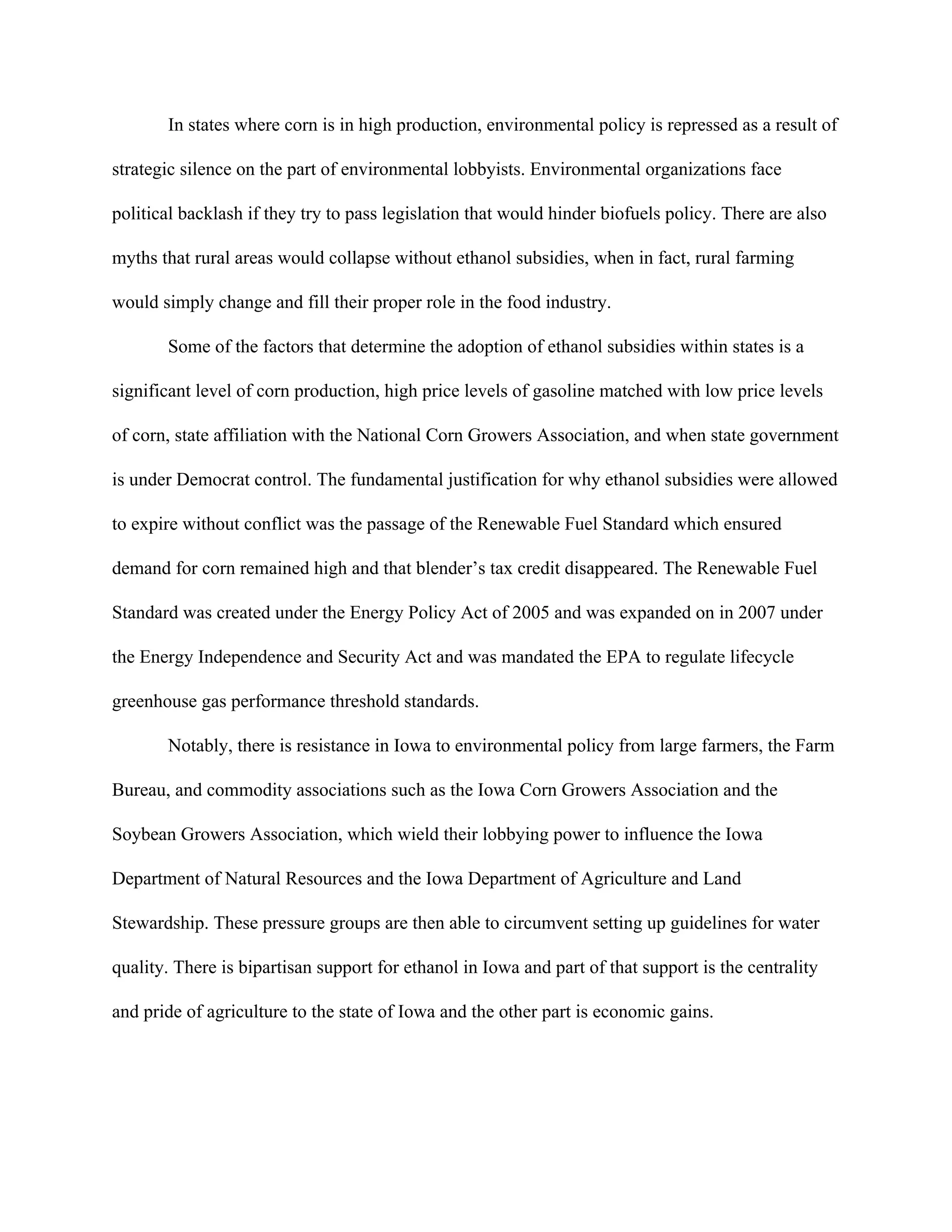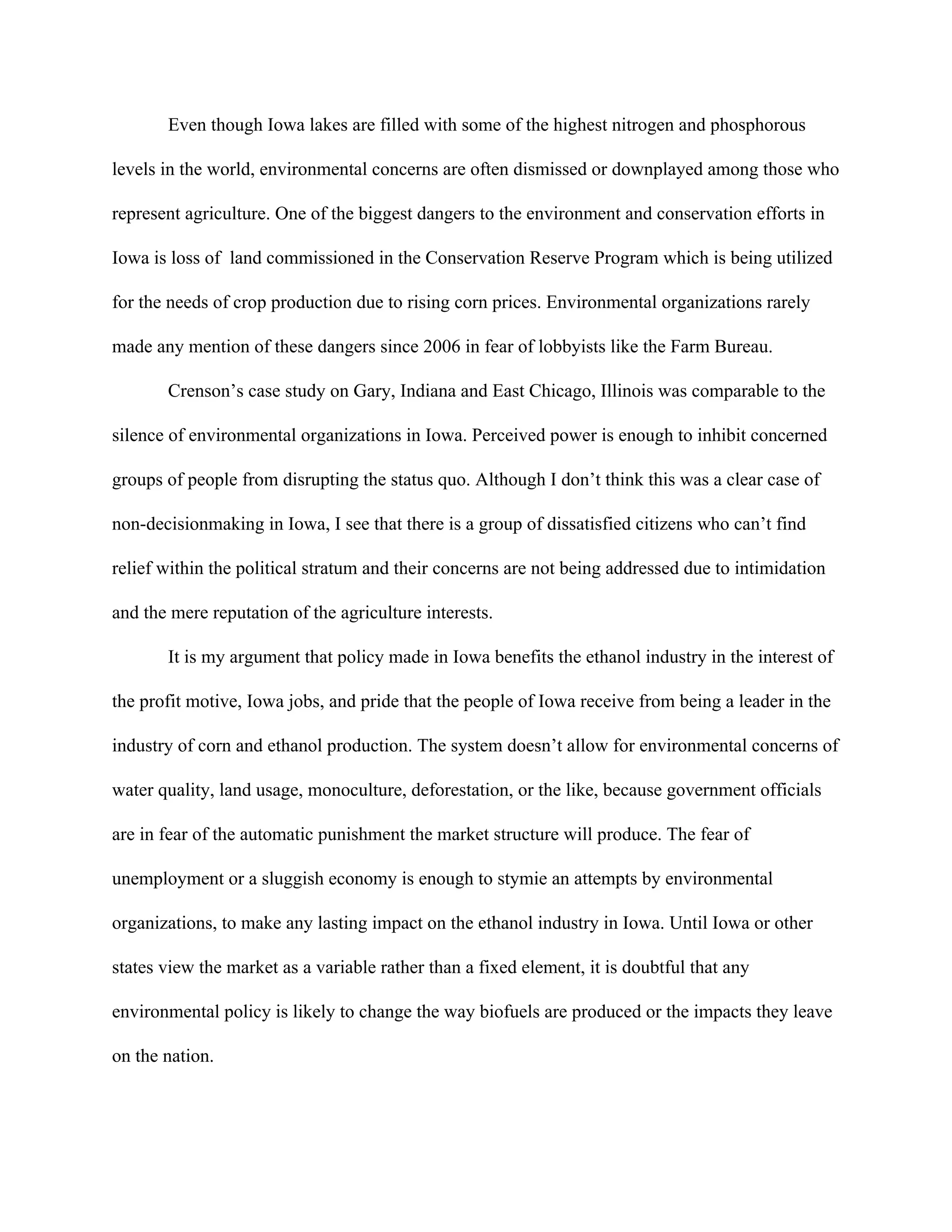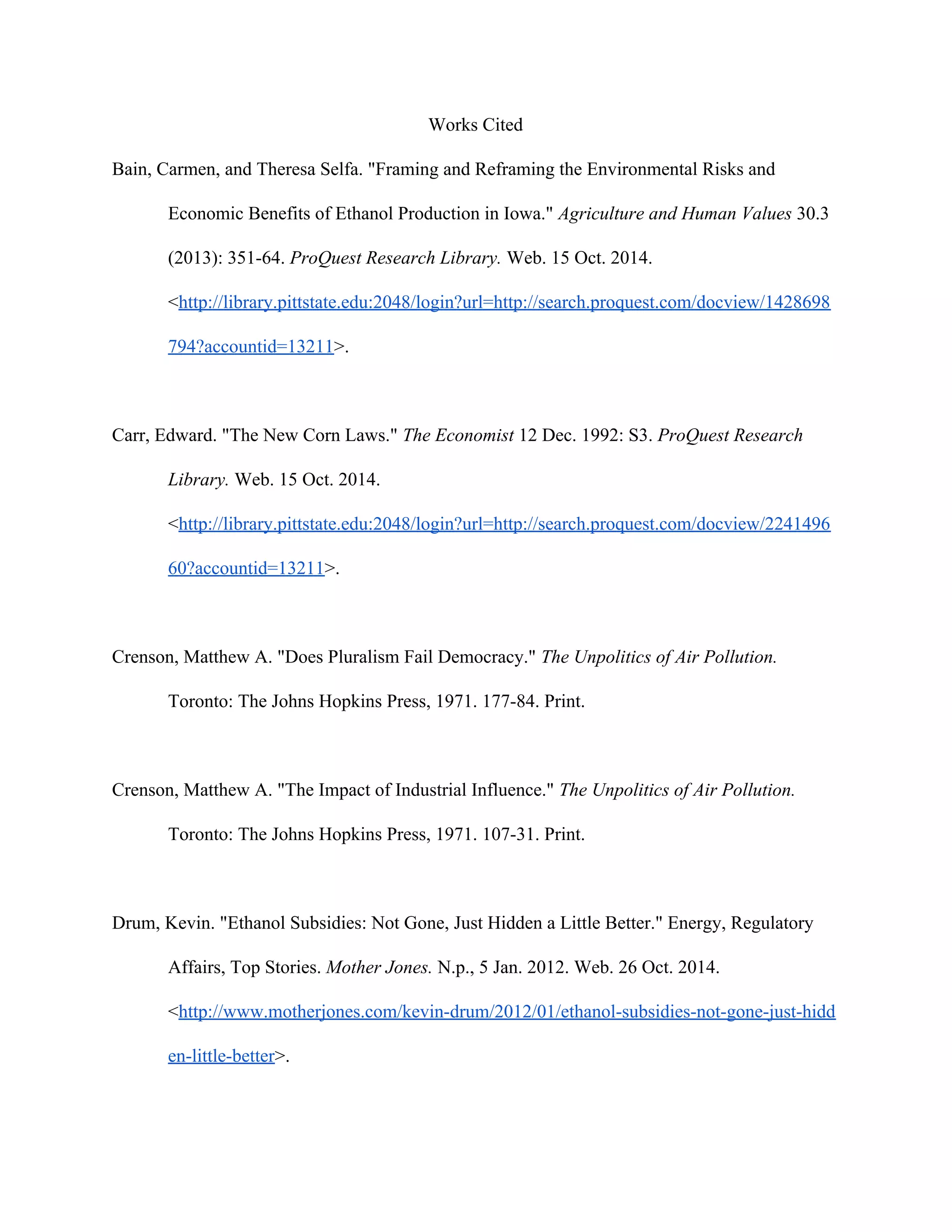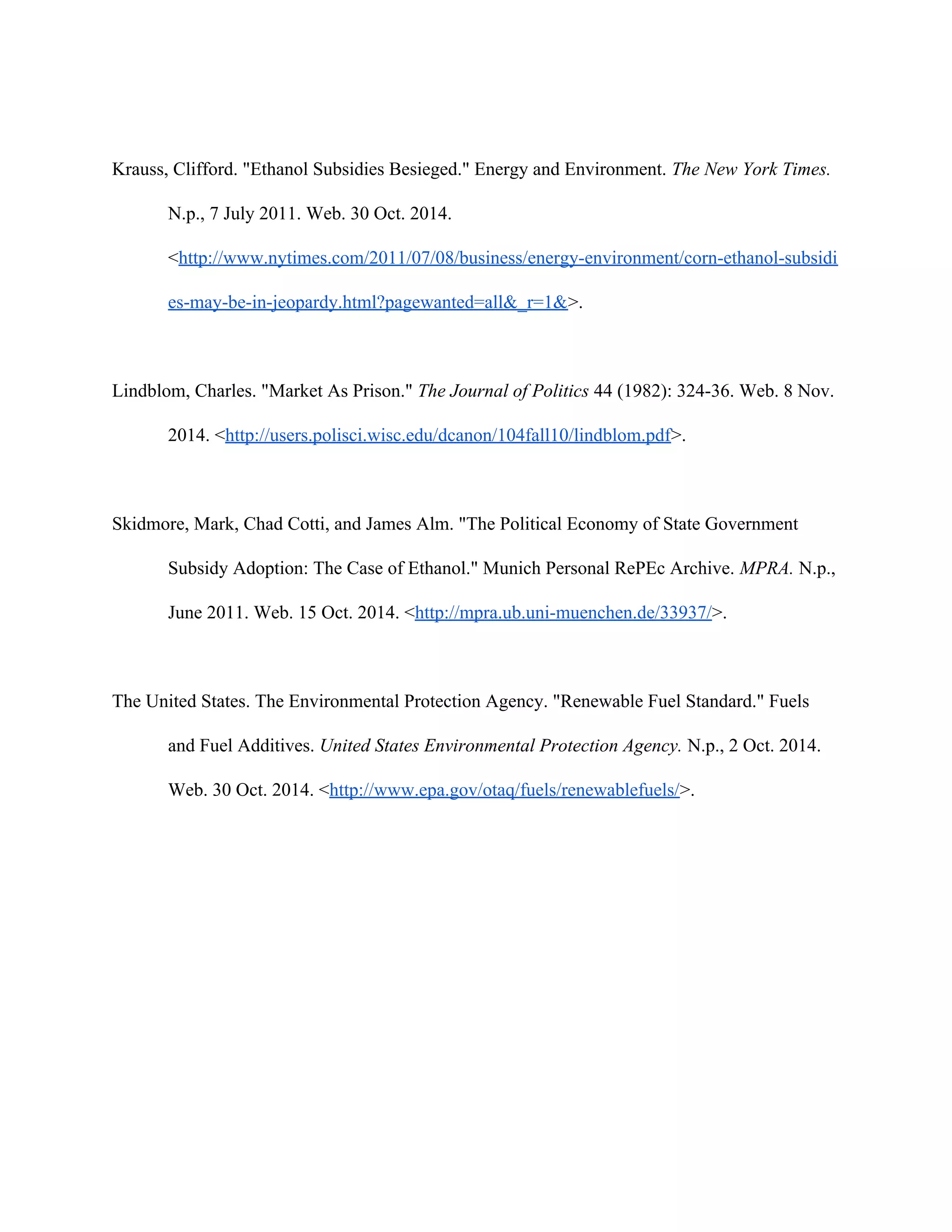This document summarizes an academic paper analyzing ethanol subsidies in Iowa. It discusses how Iowa has a perfect competition economic structure and how farm subsidies are important to Iowa's economy. Ethanol production has expanded significantly due to federal and state subsidies since the 1980s. While ethanol subsidies expired in 2011 without much opposition, the Renewable Fuel Standard mandate continues to guarantee high ethanol demand. The paper examines different perspectives on ethanol subsidies and their environmental impacts from various studies and interviews. While ethanol brings economic benefits to Iowa, it may come at the cost of increased water pollution, soil erosion, and impacts on biodiversity due to expansion of corn monocultures.

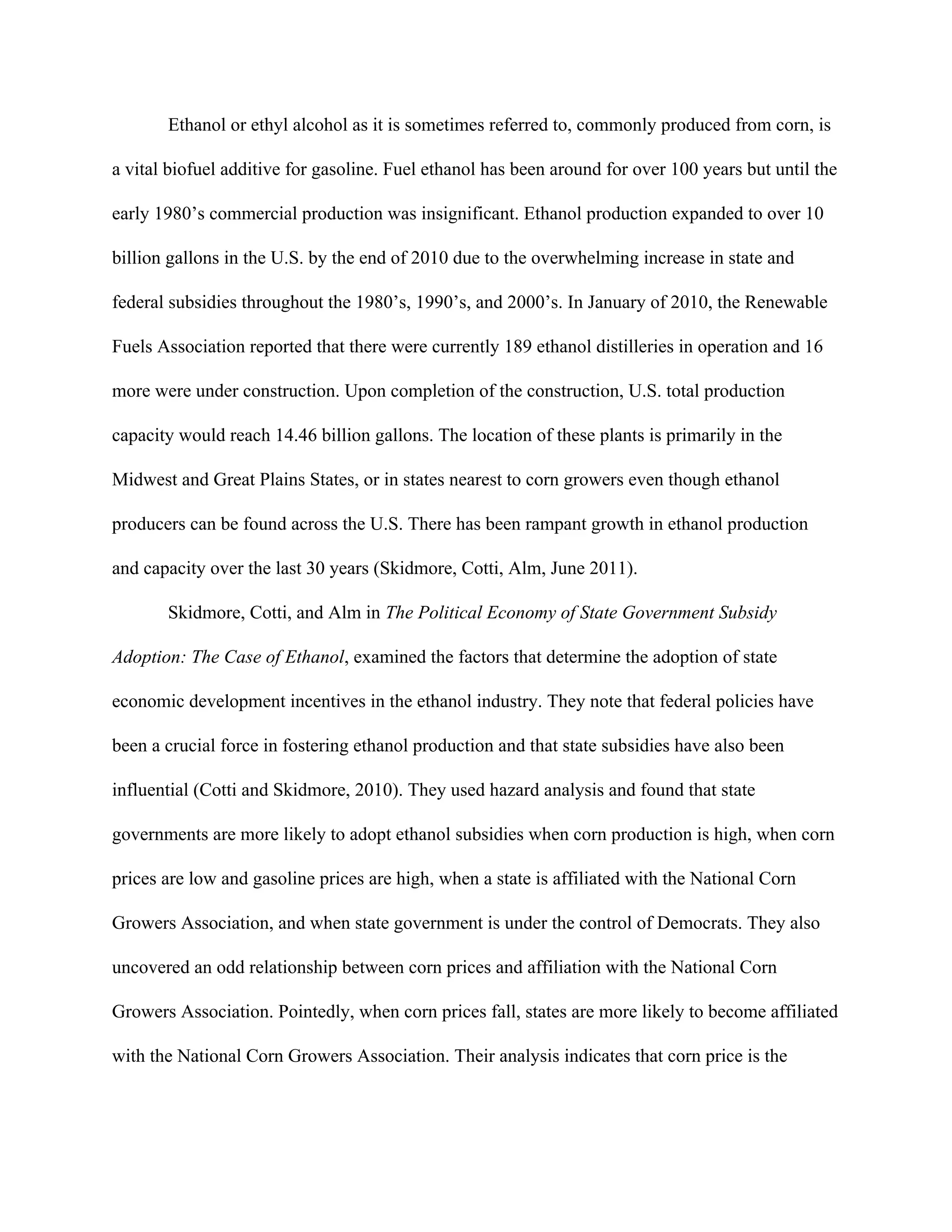
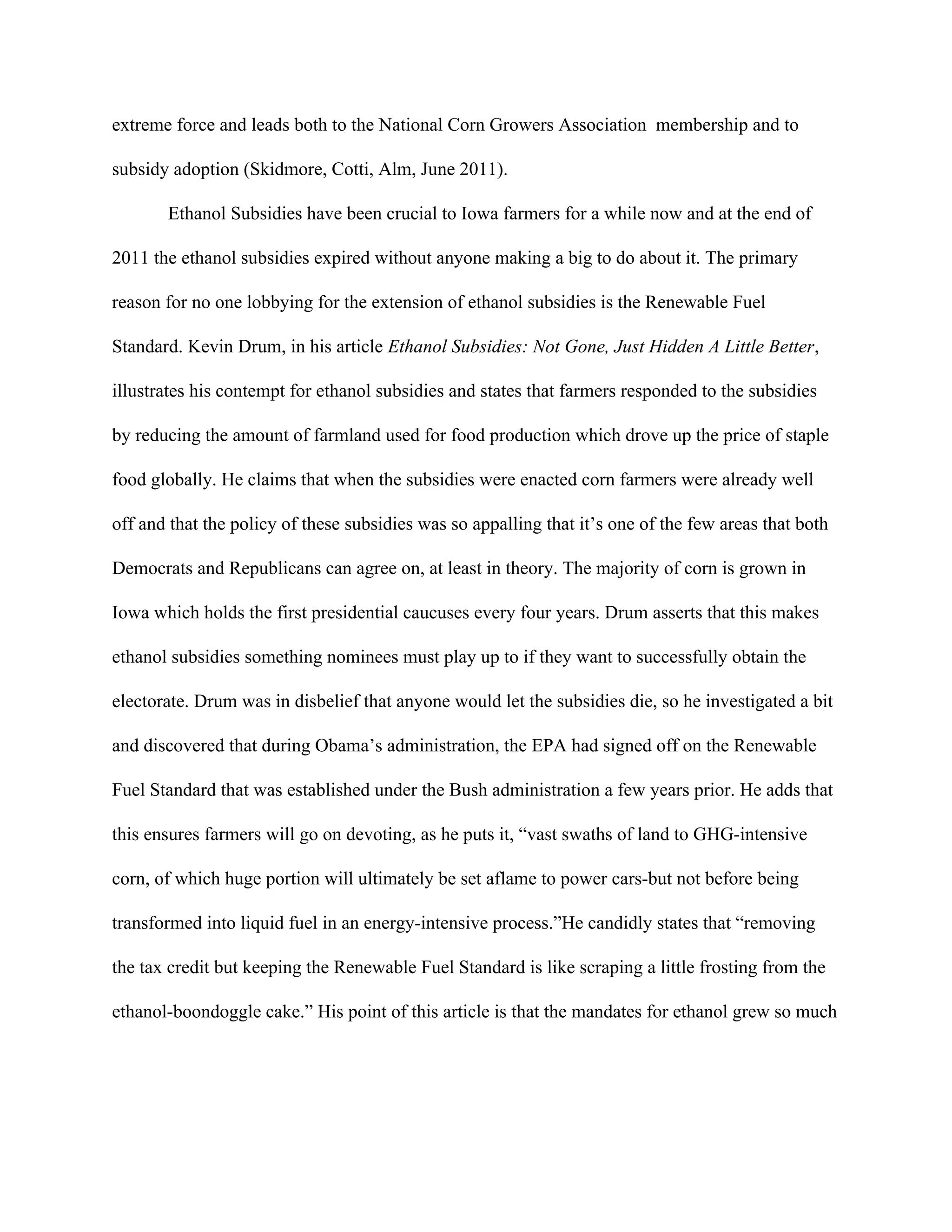

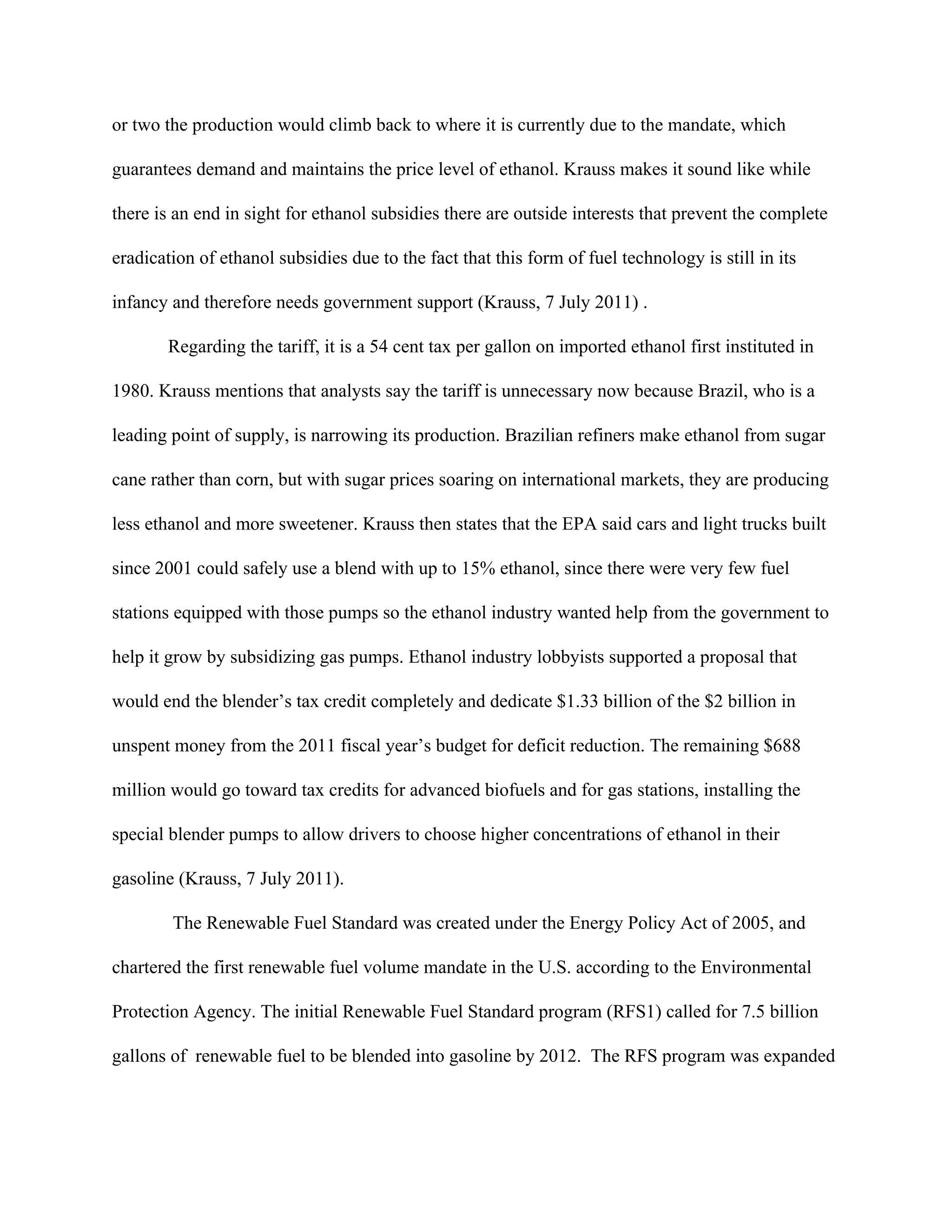
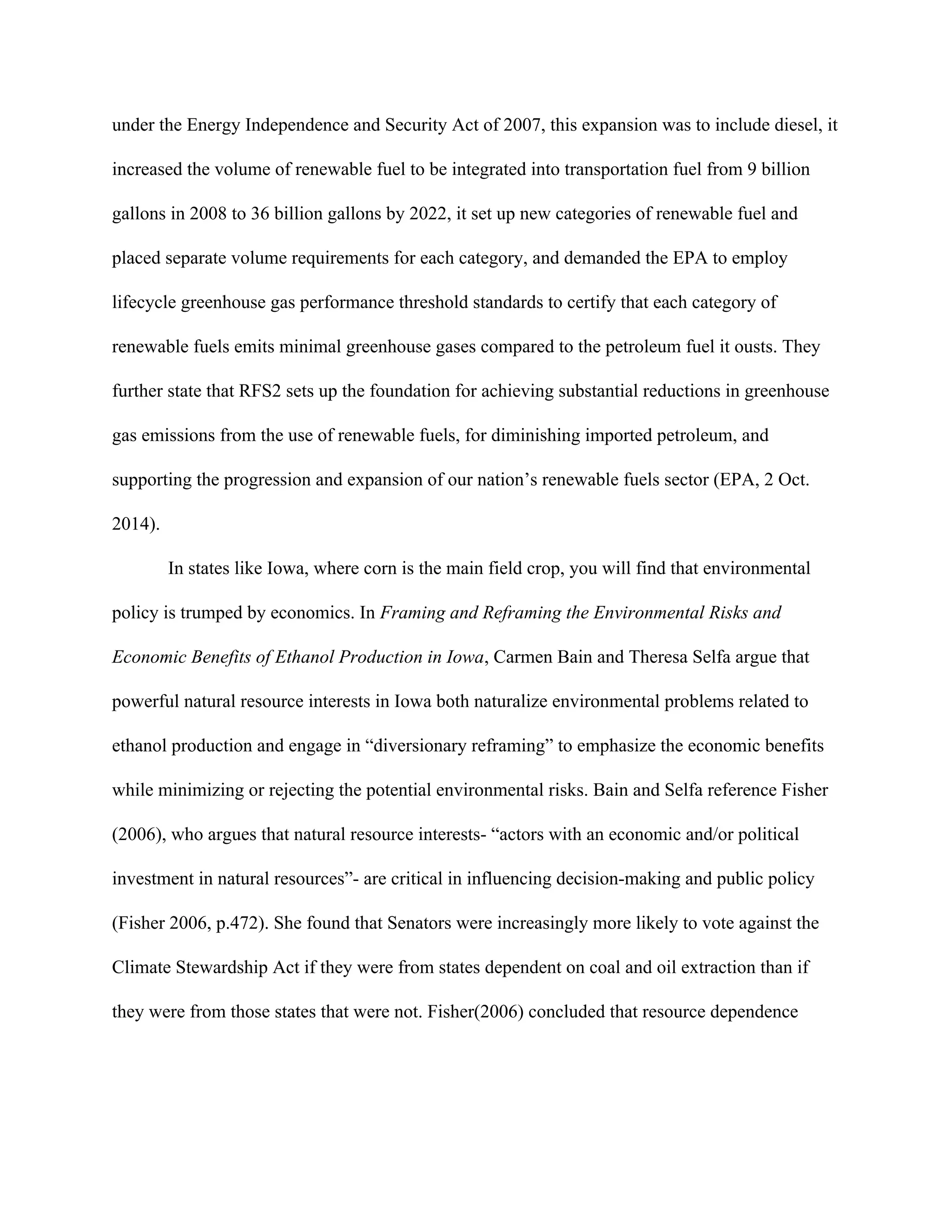

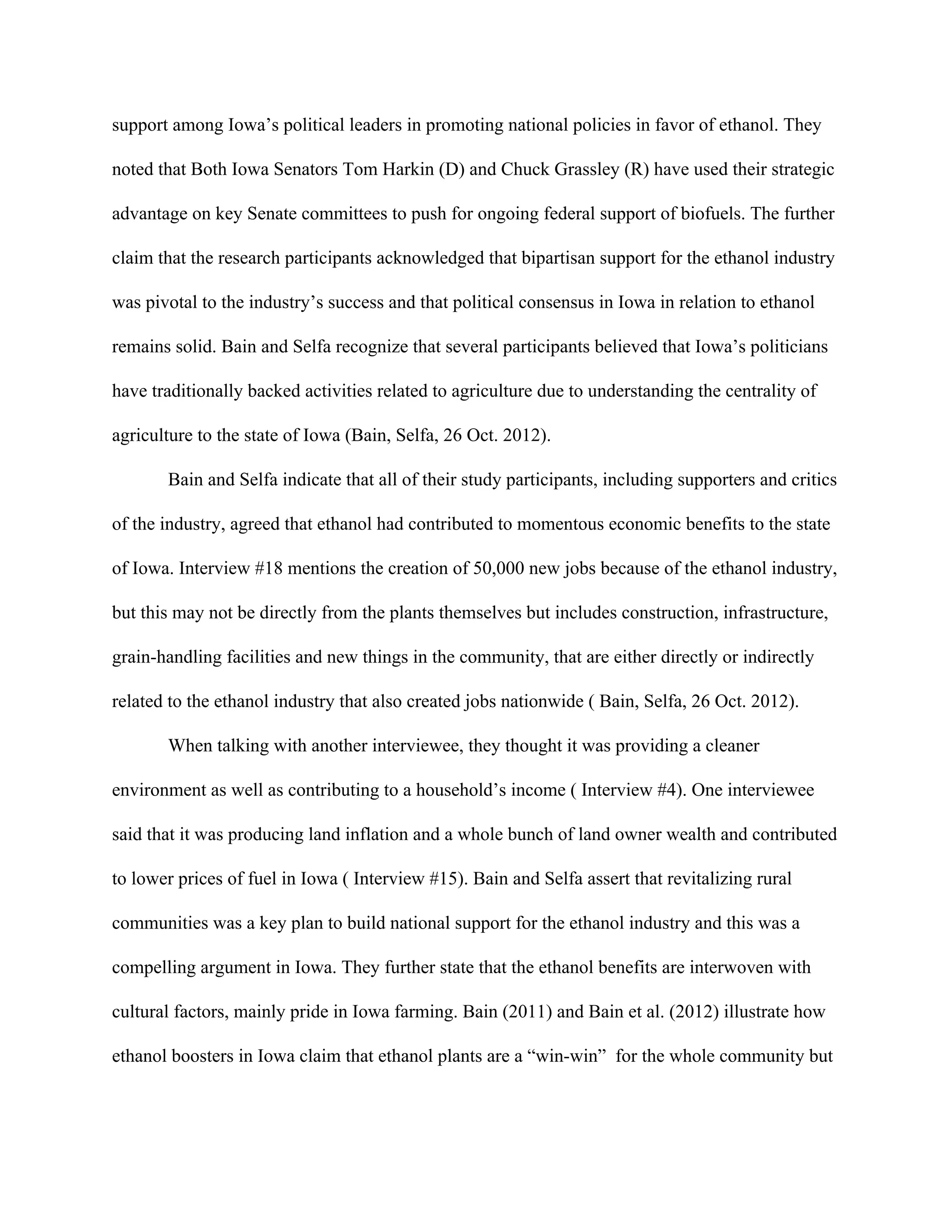
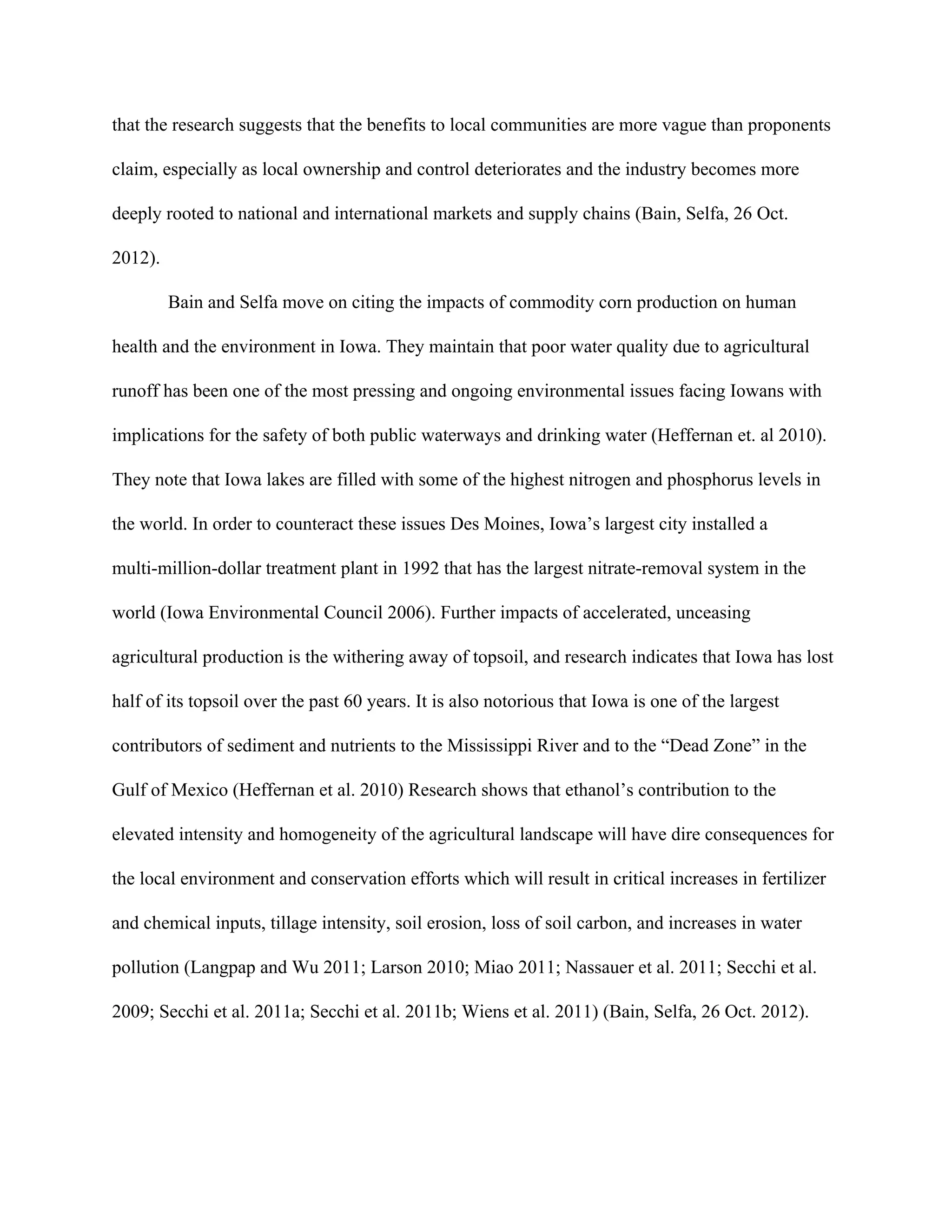
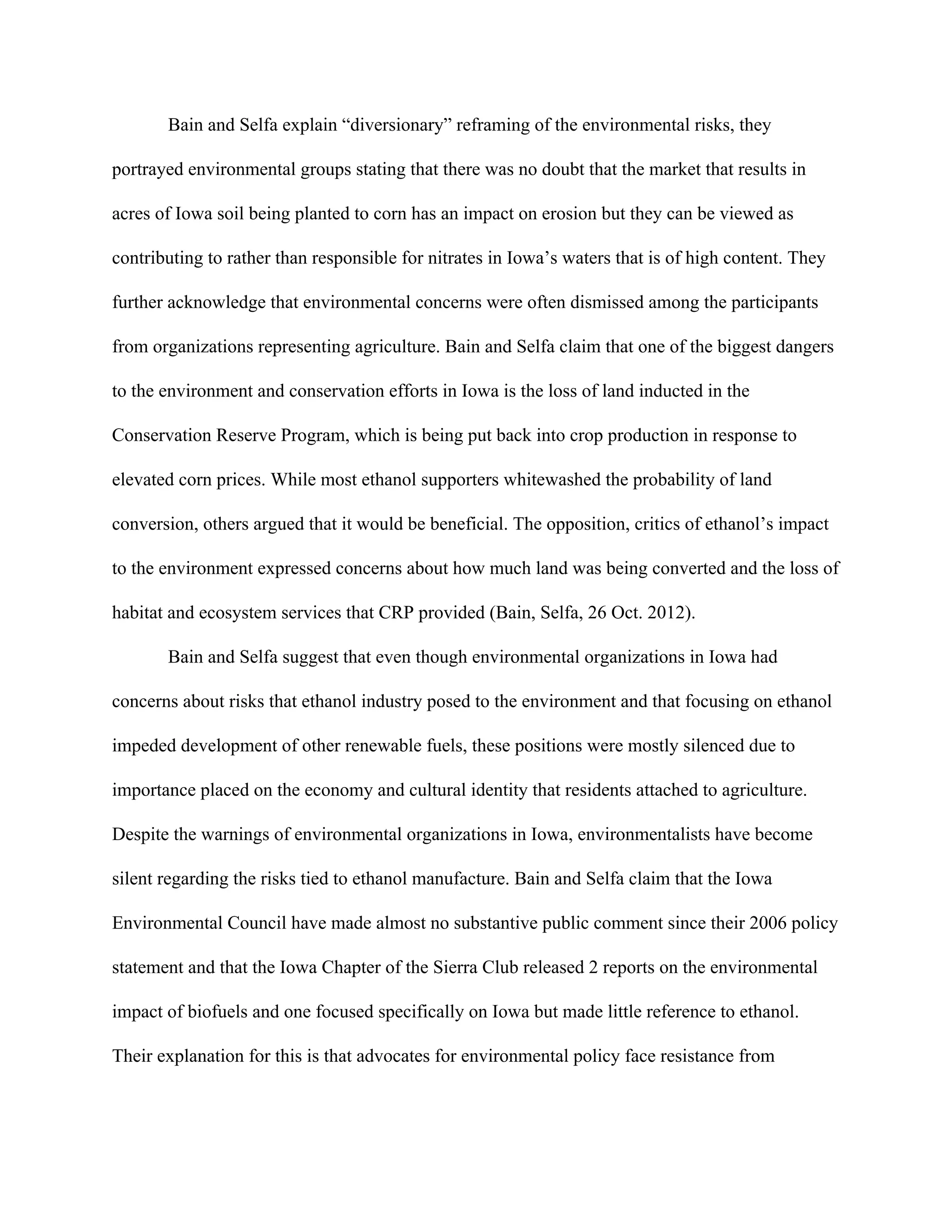
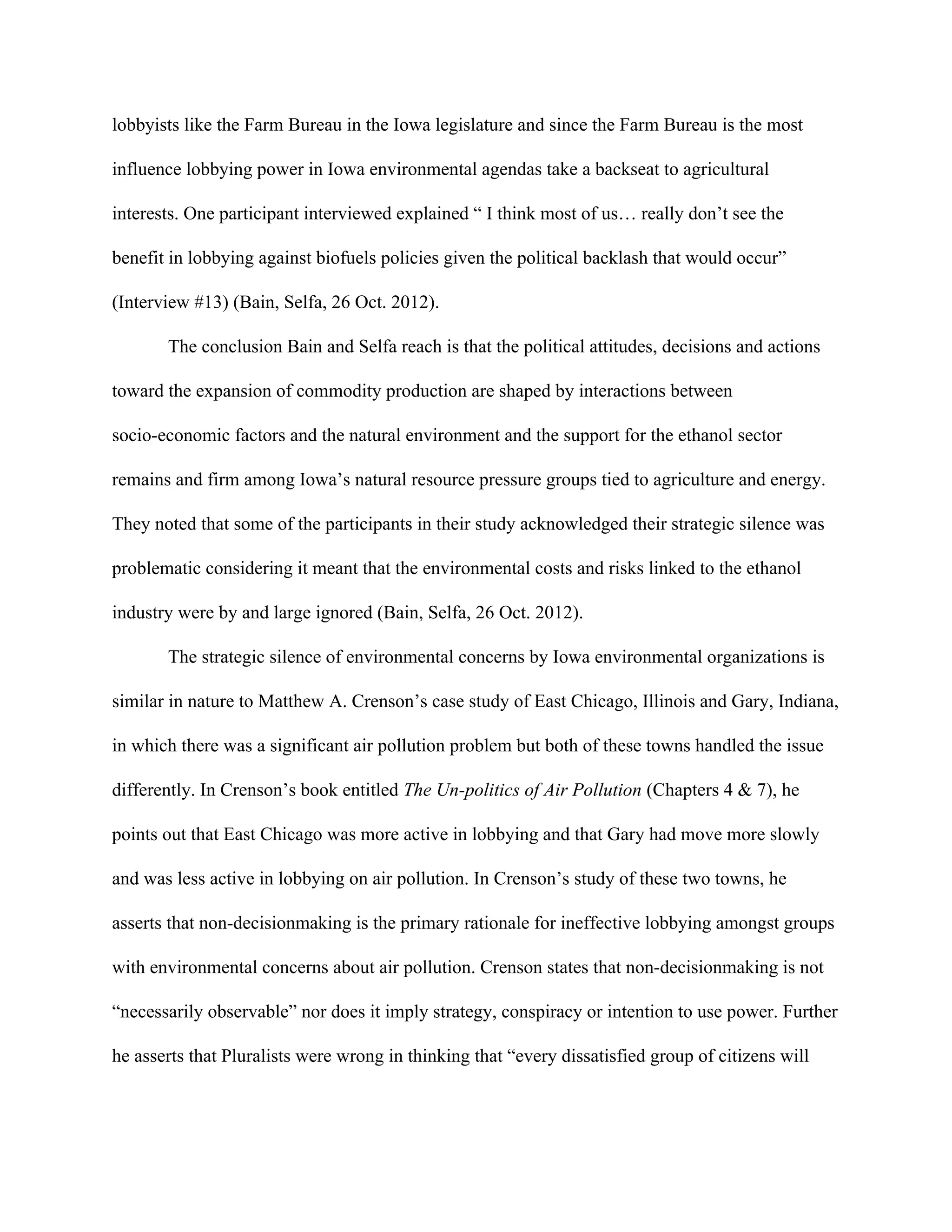
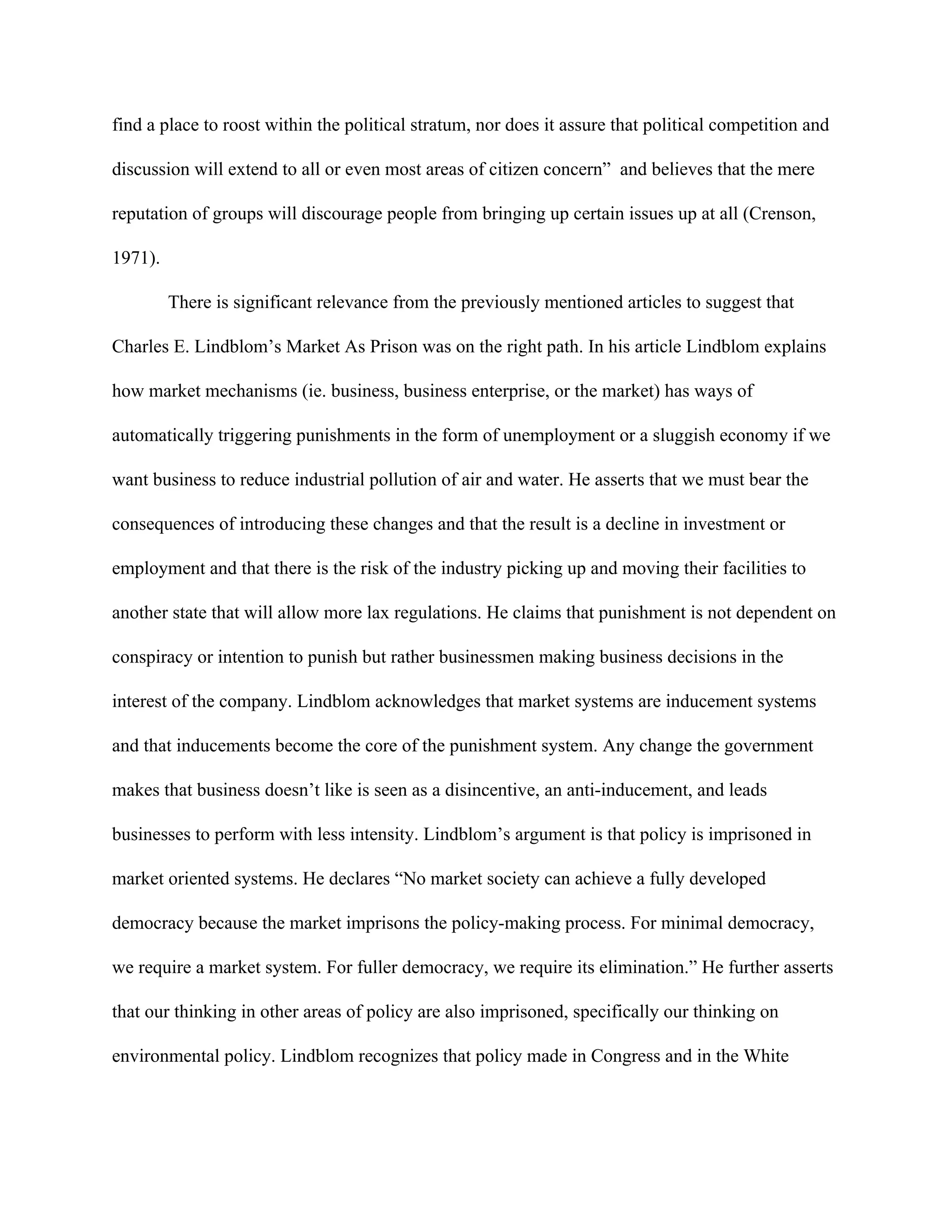
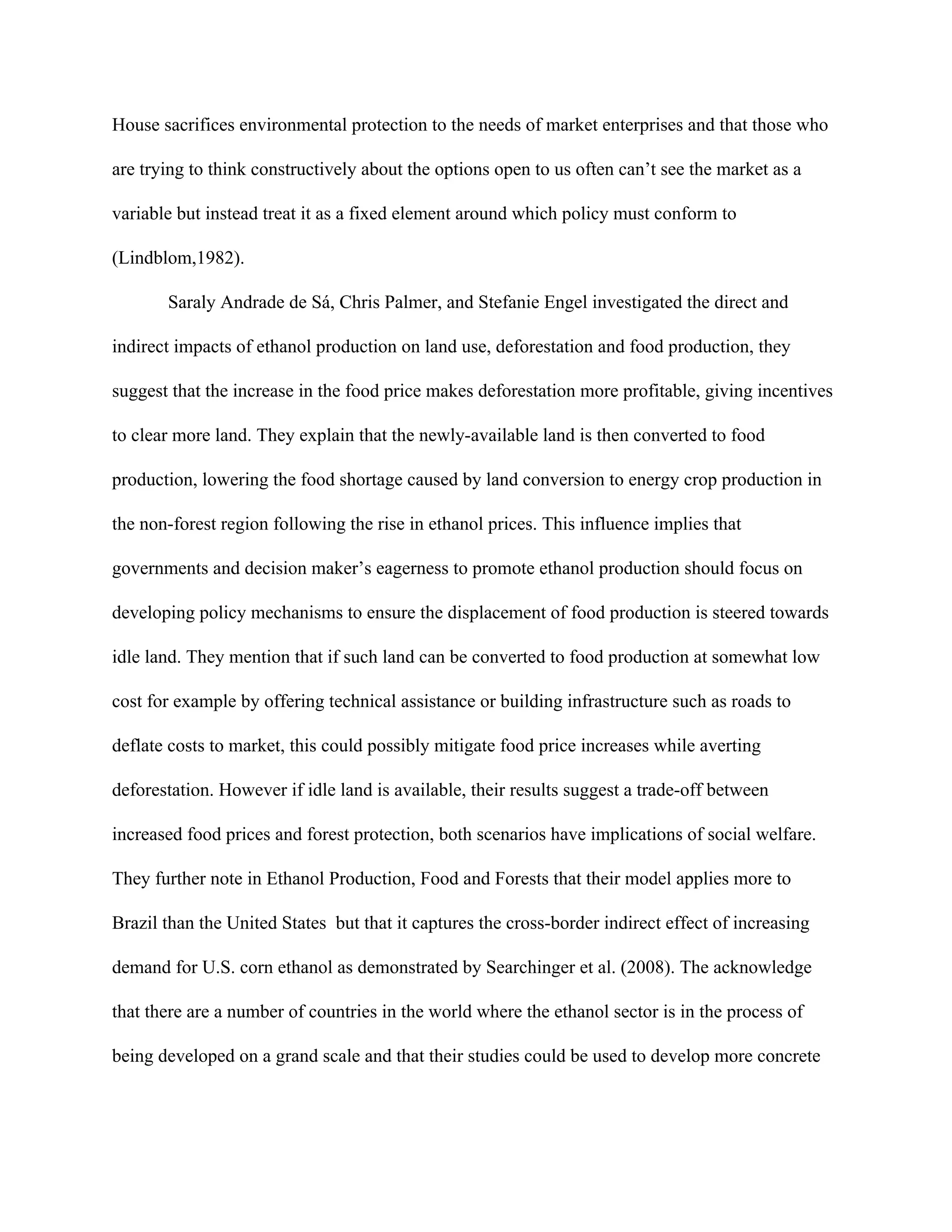
![policy implications to illustrate under what circumstances ethanol production could be expanded,
while minimizing the adverse impacts on deforestation and food production ( S. Andrade de Sá
et al., 16 Oct. 2011).
The Edward Carr offers a perspective of life without ethanol subsidies in The New Corn
Laws, he asserts that there is a myth about what would happen to rural areas if ethanol subsidies
were removed. He claims that this sort of pessimism is rarely credible and is part an outdated
tradition that rejects rural change. He further indicates that the closure of one plant such as
General Motors affects the local economy more than the loss of a tenth of America’s farmers
according to John Lee, head of the economic service of America’s Department of Agriculture.
He stresses that reform would not be the end of rural towns and villages, he attributes the
changing character to the rise of motor transport and the super market as leading to the harsh
decline in farming. He goes on to say that elimination of subsidies might not solve farming’s
environmental problems but it would alleviate them and that without subsidies, farming would
not be destroyed, just slightly different. Carr explains, farmers exposed to swings in prices would
use futures markets and insurance to protect themselves and would begin to fill their proper role
in the food industry. Carr claims that little has changed since 1779 when Adam Smith wrote, “the
interest of the consumer is almost constantly sacrificed to that of the producer; [the system]
seems to consider production, and not consumption, as the … object of all industry and
commerce.” Carr notes that reform has been modest in the U.S. but this article was written in
1992 so it was certain that he wouldn’t have foreseen an increase of this magnitude when he
wrote this article (Carr, 12 Dec. 1992).
Conclusions](https://image.slidesharecdn.com/1548ab09-021f-4296-85d2-54c67b098075-170216171919/75/EthanolSubsidiesAnalysis-14-2048.jpg)
